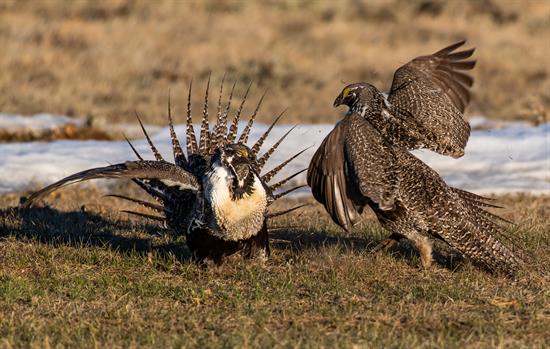OPINION: Simpson champions local sage-grouse conservation in the WestBy Congressman Dan Newhouse
Washington,
February 18, 2021
This piece was originally published in the Post-Register on February 18, 2021.
Those of us fortunate enough to have lived in the West know how awe-inspiring it is to be surrounded by the vast wilderness, breathtaking landscapes, and unique species that make our nation so richly diverse. From the avid hunter or outdoor recreationist, to the biologist at a local conservation district, to the farmer or rancher working on the frontlines of land management, all conservationists agree that we have a duty to protect the world we live in, and that includes the wildlife around us. The Endangered Species Act (ESA) was intended to play an important role in the preservation of species that require additional protections, with the federal government devoting resources to plants and animals that need it most. Some species – including American icons like the bald eagle and the gray wolf – have benefited from this designation and have bounced back from the brink of extinction. Unfortunately, far too many groups claiming to advocate for wildlife have adopted a misguided, impulsive approach to list every species under federal protection. In many cases, locally-led conservation efforts are far more beneficial to native wildlife species than those mandated by bureaucrats who can’t see past the Potomac River. The greater sage-grouse is one of those species. States, Tribal governments, local communities, landowners, and industry partners have invested years and millions of dollars to develop and implement unprecedented efforts that have been effective in supporting the greater sage-grouse. The U.S. Fish and Wildlife Service estimates there are now between 200,000 and 500,000 greater sage-grouse in North America, inhabiting sagebrush in 11 states and 2 Canadian provinces. This important work continues, and we should laud the strategic, balanced approach that conserves a healthy sagebrush landscape for our wildlife and communities. If we were to take the kneejerk reaction to the list the species, these plans would only be further caught up in an endless cycle of litigation and bureaucratic red tape that undermines local conservation processes. Representative Mike Simpson (R-ID) knows this very well, which is why he has led efforts for years in the U.S. House of Representatives to empower states and local entities to control greater-sage grouse conservation efforts. Serving alongside him as Members of the House Appropriations Committee and Congressional Western Caucus, I have seen firsthand how Rep. Simpson has worked to increase flexibility for sage-grouse plans and has secured approximately $300 million to aid western states in their conservation efforts. Most recently, he led a letter signed by 31 Members of Congress from both the House and the Senate urging the Administration to ensure the greater sage-grouse remains unburdened by federal protection mandates and politically-motivated litigation that – once again, unfortunately – comes hand-in-hand with a listing under the ESA. Rep. Simpson deserves praise for his strong efforts. Left-leaning environmentalists insist a national approach to local issues is the only way forward, but Rep. Simpson has stood in strong opposition to this false claim. Local decisions can be more effective and impactful than any blanket solution developed by DC-based activists, and the greater sage-grouse species is living proof. Local conservation efforts have empowered individual sage-grouse populations to recover, and as a result, the U.S. Fish and Wildlife Service has not recommended its listing. Since coming to Congress, I have been proud to join my colleagues like Rep. Simpson to advocate for strong, locally-led conservation practices and a modernized Endangered Species Act that works for rural America. In the 117th Congress, we will continue striving to ensure conservation decision-making moves out of the Beltway and back to the state and local leaders who know what is best for their communities. |
Stay Connected
Use the following link to sign up for our newsletter and get the latest news and updates directly to your inbox.


